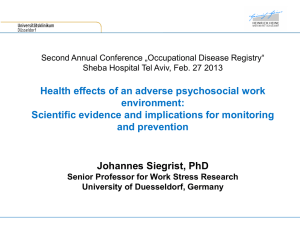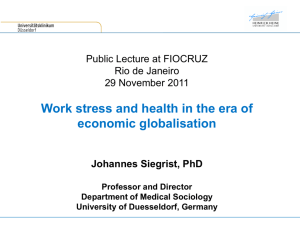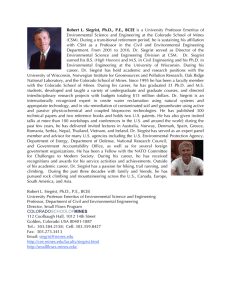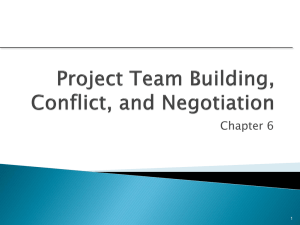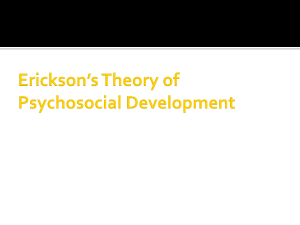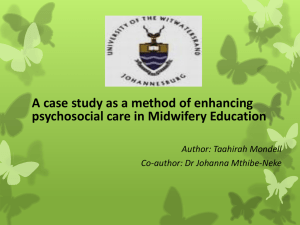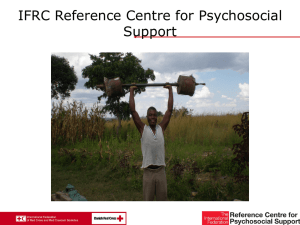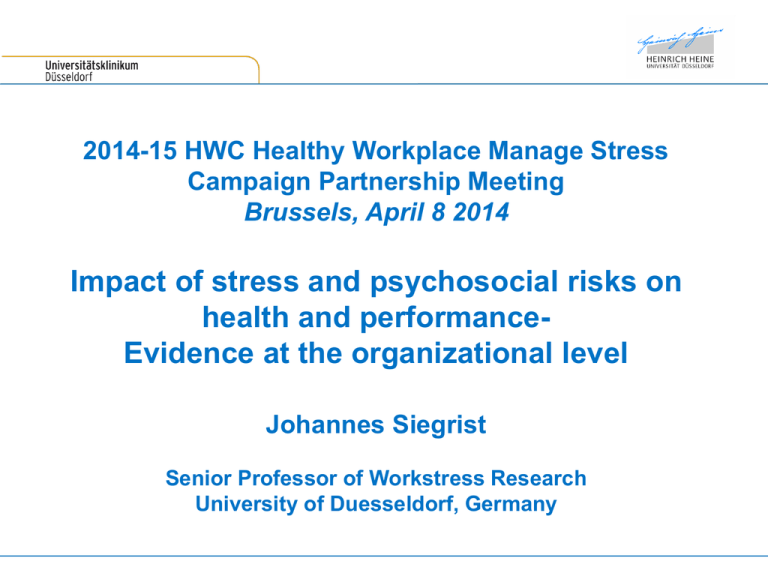
2014-15 HWC Healthy Workplace Manage Stress
Campaign Partnership Meeting
Brussels, April 8 2014
Impact of stress and psychosocial risks on
health and performanceEvidence at the organizational level
Johannes Siegrist
Senior Professor of Workstress Research
University of Duesseldorf, Germany
Main Questions
• Is stress at work a real challenge to
working populations across Europe?
• What is the scientific evidence linking stress
at work with adverse health?
• What can be done at organizational level to
manage stress and improve health at work?
Importance of work for health
Work …
provides a source of regular income and related
opportunities
provides a source of personal growth and training of
capabilities/competencies
provides social identity, social status and related rewards
enables access to social networks beyond primary groups
Impacts on personal health and well being by exposure to
material and psychosocial stressors
Significant changes in the nature of work and
labour market
Increase of work pressure, pace of work,and competition,
including ‘high power work organization’ (impact of economic
globalization)
High demand for flexibility, mobility, and adaption of workers
to new taks/technologies
Fragmentation of occupational careers, de-standardized or
atypical work, and growing job instability/insecurity
Increase of service and IT professions/occupations with high
psychomental/emotional workload
Segmentation of labour market; social inequalities in quality
of work and employment
Effects of economic globalisation: Labour
market consequences in developed countries
Increased pressure of rationalisation
(mainly due to wage competition)
Downsizing, Merging, Outsourcing
Work
intensification
Job
insecurity
Low wage /
salary
Increase in work intensity 2004-2010:
European Social Survey, 19 EU countries
Source: Gallie D (Ed.) (2013) ESS Topline Results Series 3, European Social Survey
Job insecurity 2004-2010
European Social Survey, 19 EU countries
Source: Gallie D (Ed.) (2013) ESS Topline Results Series 3, European Social Survey
2. Question: What is the scientific evidence linking
stress at work with adverse health?
Stress occurs if a person is exposed to a threatening demand
(stressor) that taxes or exceeds her/his capacity of
successful response risk of loss of control
Dimensions of stress reactions:
• Cognitive appraisal (evaluation of threat)
• Affective response (anxiety, anger)
• Activation of stress axes in organism (SAM, HPA)
• Behavioural reaction (fight or flight) (restricted option!)
Critical for health:
• Chronic stressors requiring active coping allostatic load;
risk of stress-related disorders (depression, CHD)
Working conditions as chronic stressors:
How to identify ‘toxic’ components within complex
environments?
negative
emotions
stress-related
disorders
stress responses
allostatic load
Chronic psychosocial stress at work:
Complementary stress-theoretical models
Demand-control model
(R. Karasek, 1979;
R. Karasek & T. Theorell, 1990)
Focus on
job task profile: high
demand/low control
Effort-reward imbalance model
(J. Siegrist, 1996;
J. Siegrist et al., 2004)
Focus on work
contract: high
effort/low reward
Organizational injustice model
(J. Greenberg, 1990;
M. Elovainio et al., 2002)
Focus on unfair
procedures and
interactions
The demand-control model
(R. Karasek 1979; R. Karasek & T. Theorell 1990)
high
low
low
Scope of decision/control
Quantitative demands
high
low
distress
active
high
distress
passive
Psychometric scale of demand-control model: www.jcqcenter.org
The model of effort-reward imbalance
(J. Siegrist 1996)
Extrinsic components
- labour income
- career mobility / job security
- esteem, respect
demands / obligations
reward
effort
motivation
(‘overcommitment‘)
motivation
(‘overcommitment‘)
Intrinsic component
Psychometric scale of effort-reward model: www.uniklinik-duesseldorf.de/med-soziologie
Mean level of work stress in 17 European countries
(SHARE, ELSA, n = 14 254, aged 50-64)
Psychosocial Working Conditions
Switzerland
Denmark
Sweden
Sweden
Netherlands
Netherlands
Denmark
Switzerland
Belgium
Portugal
Austria
Slovenia
Germany
Belgium
France
Germany
Spain
France
England
England
Slovenia
Estonia
Estonia
Austria
Italy
Spain
Poland
Czechia
Czechia
Italy
Portugal
Hungary
Hungary
Poland
.75
1
Mean ERI
1.25
3.5
4
4.5
Mean Low Control
Source: T. Lunau et al. (2013): Unpublished results
5
The social gradient of work stress in the European
workforce (age 50-64): SHARE-study
Social gradient of work stress
40
Percent high stressed
35
30
Very low
25
Low
20
Medium
High
15
Very high
10
5
0
Effort-Reward Imbalance
Low control
Source: Wahrendorf M et al. (2013) European Sociological Review 29: 792-802
Scientific evidence from prospective cohort studies:
Demand-control and effort-reward-imbalance models
• Depression:
• ~ 30 studies (Europe, USA, Canada, Japan):
People exposed to stress at work: mean increase of relative
risk: 80% = OR 1.8 (95% CI 1.1-3.1)
• Coronary heart disease:
• ~ 20 studies (Europe, USA):
.
People exposed to stress at work: mean increase of relative
risk: 40% = OR: 1.4 (95% CI 1.2-1.6)
• Additional evidence of elevated health risks:
Metabolic syndrome / type II diabetes
Alcohol dependence
Musculoskeletal disorders
Source: Steptoe A, Kivimäki M 2012. Nat Rev Cardiol.9 ; Stansfeld SA ,Candy B 2006 Scand J WEH 32: 443
Work stress and cardiovascular mortality:
Finnish Cohort Study, n = 812 employees
2,5
*
*
Hazard ratio#
2
Tertile (work stress):
1 = no
2 = low
3 = high
#adj.
for age, sex, SEP,
smoking, phys. act.,
SBP, cholest., and BMI
1,5
1
0,5
1
2
3
High demand / low control
1
2
3
High effort / low reward
Source: Based on Kivimäki, M, et al. (2002), BMJ, 325: 857, doi:/10.1136/bmj.325.7369.857.
Psychosocial stress at work and depressive symptoms: 13.128
employed men and women 50-64 yrs. from 17 countries in three
continents (SHARE, ELSA, HRS, JSTAR)
2,5
*
*
*
2
*
*
1,5
ERI
Low control
1
0,5
0
USA (N=1560)
Europa (N=10342)
Japan (N=1226)
Source: J. Siegrist et al (2012) Globalization and Health 8:27.
3. Question: What can be done at organizational
level to manage stress and improve healthy work?
• Provide evidence of a business case
• Provide shared commitment from management
and employees
• Provide available expertise (e.g. occupational
safety & health) and equipment
• Monitor working conditions and employees‘ health
• Develop and implement programmes, invest in
improvements, consult models of best practice
• Ensure continuity, evaluate outcomes, build
networks
Develop and implement
Healthy Workplace Programs
Personal level: Stress prevention programs
Interpersonal level: Leadership training;
communication skills;
Structural level: Organizational/personnel
development (based on work stress models)
Job enrichment/ enlargement (autonomy, control, responsibility)
Skill utilization / active learning
Participation / team work and social support
Culture of recognition
Fair wages/ gain-sharing
Continued qualification/ promotion prospects
Personal level: Effects of worksite stress
prevention programs: Meta-analysis
Source: D Montano et al. (2014) Scand J Work Environ Health, doi: 10.5271/sjweh.3412 .
Interpersonal level: Leadership training of managers
and stress hormone excretion in subordinates
Intervention group
Mean Cortisol
(nmol/l)
Control group
Baseline
After 1 year
Baseline After 1 year
387.2
345.2
390.4
391.3
6.2
5.7
Mean decision
6.0
latitude
(range 2-8)
*
6.1
**
Interaction group X time: *p = .05, **p = .02
Source: T. Theorell et al. (2001), Psychosom Med, 63: 724-733.
Structural – level: Organizational intervention in a
Canadian hospital vs. control hospital*
Means at t2 adj. for t0
Variable
Demand
Control
Social support
Reward
Effort-reward imbal.
Work-rel. burnout
experimental - control hospital
11.9
70.0
23.7
31.2
1.0
43.2
12.6
68.7
23.0
30.2
1.1
48.3
p
.008
.051
.011
.003
.001
.003
*36 month-follow-up, two Canadian hospitals, N=248 (intervention) vs. 240 (control
hospital) (ANCOVA, adj. for baseline values)
Source: R. Bourbonnais et al. (2011), Occup Environ Med, 68: 479-486.
Seven practices of successful organizations:
Reconciling health promotion with economy!
1. Employment security
2. Selective hiring of new personnel
3. Self-managed teams; decentralization of decision
making
4. Comparatively high compensation contingent
on performance
5. Extensive training
6. Reduced status distinctions and barriers
7. Extensive sharing of financial and performance
information
The Sirdal Model of Improved Work
Productivity and quality
of outcomes
Client satisfaction
Investments into
good quality
of work
Workplace/-environment
Health and wellbeing of
employees
Thank you!

